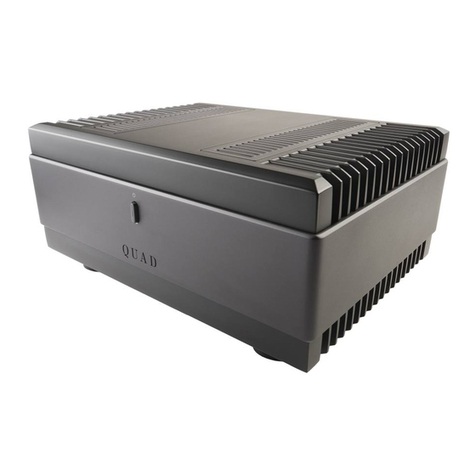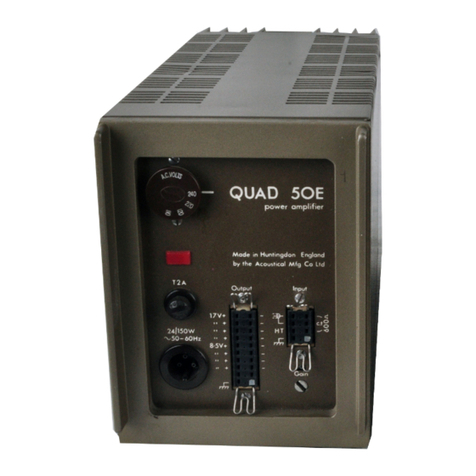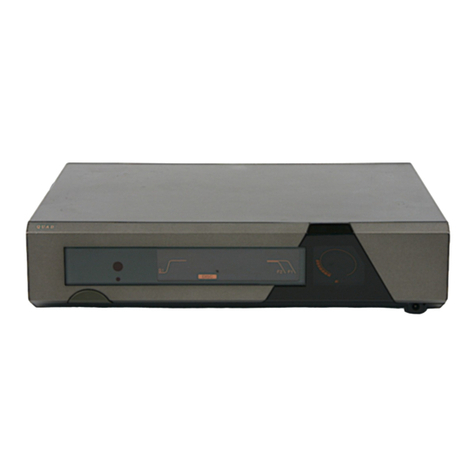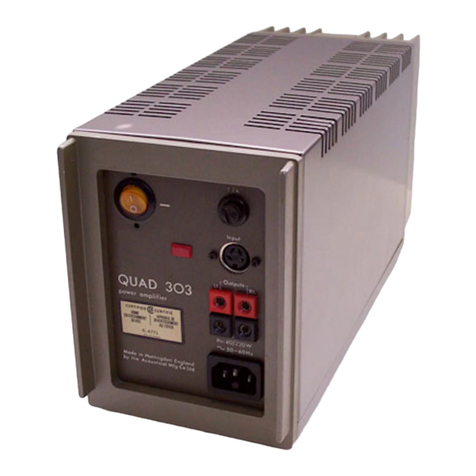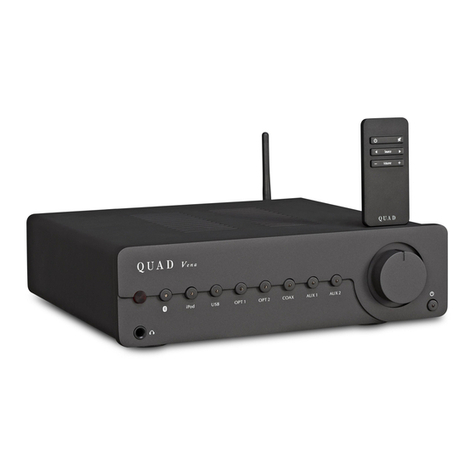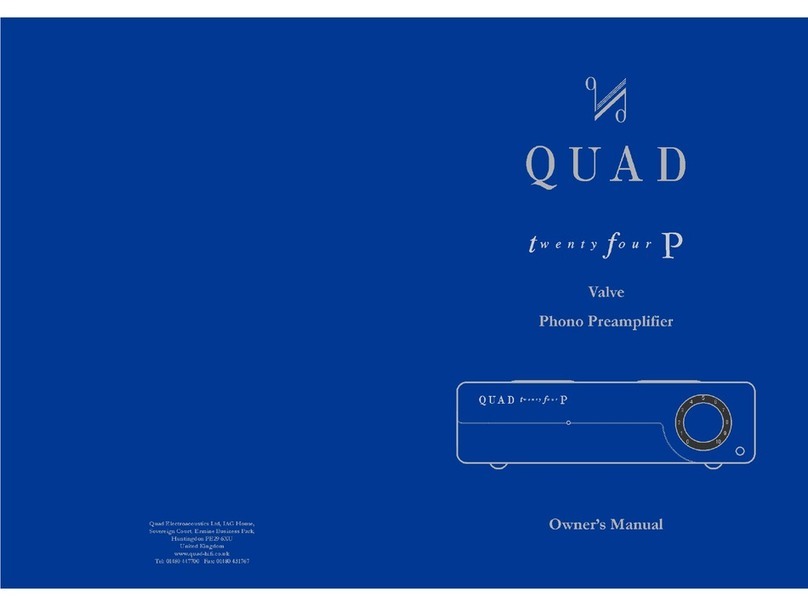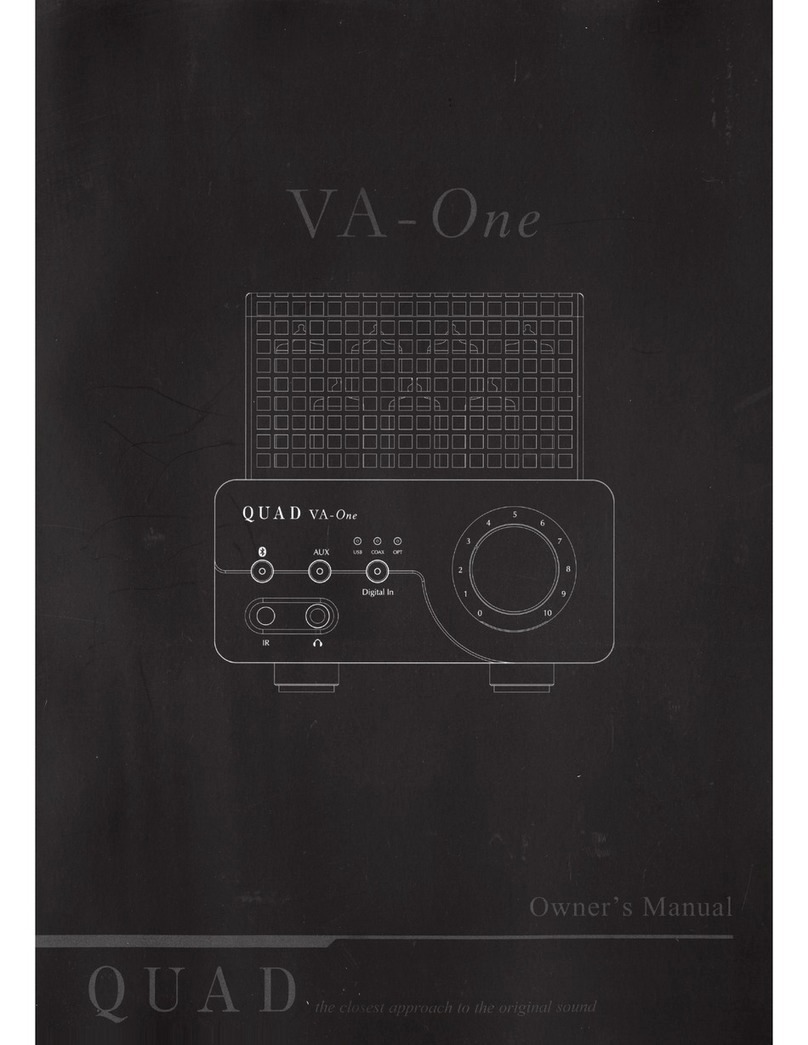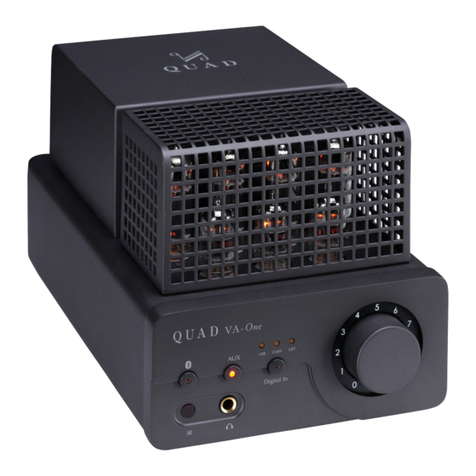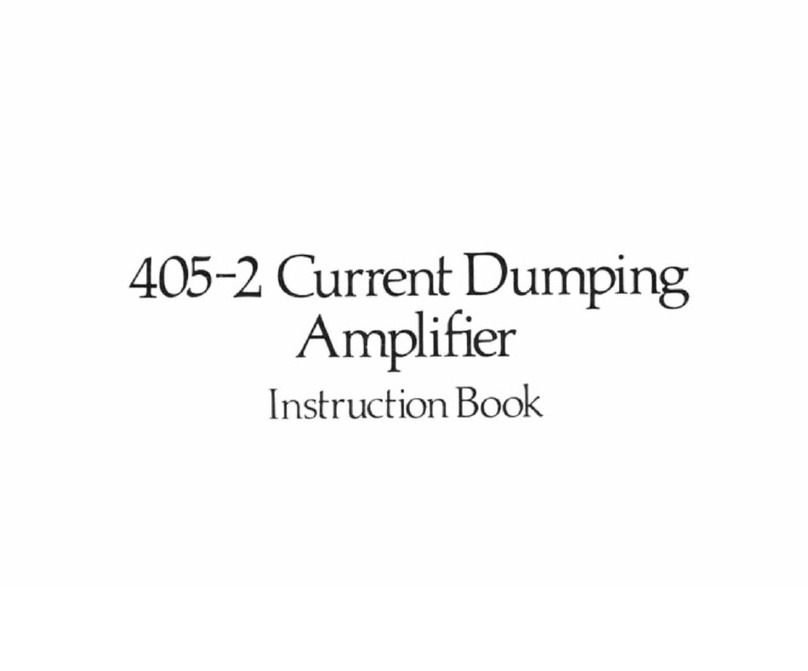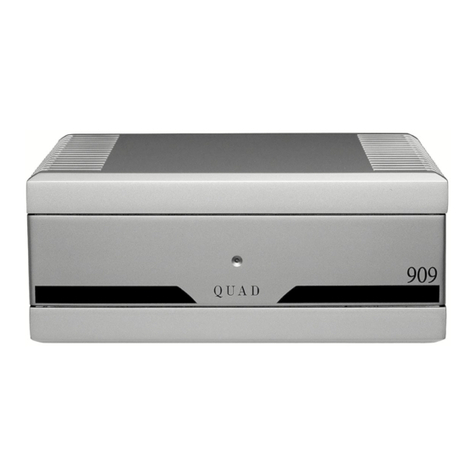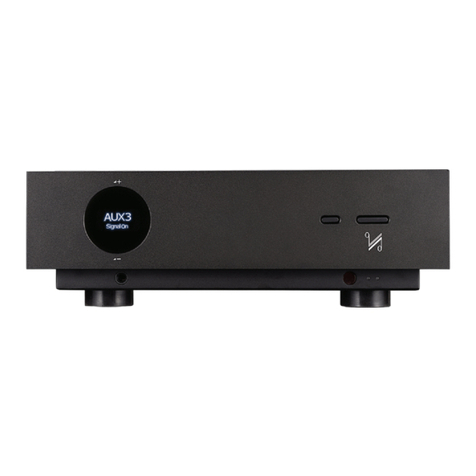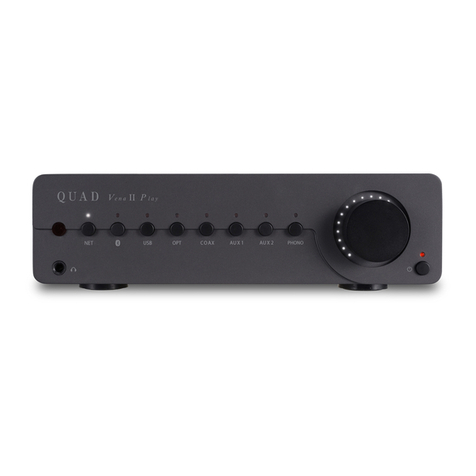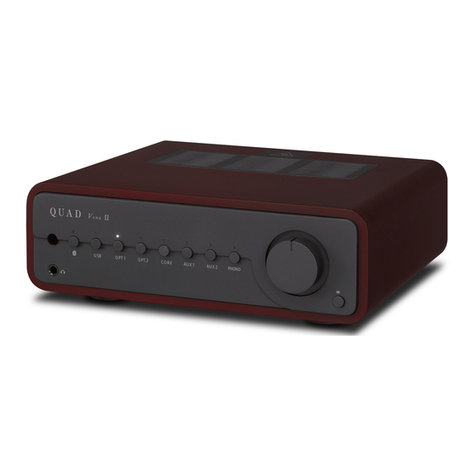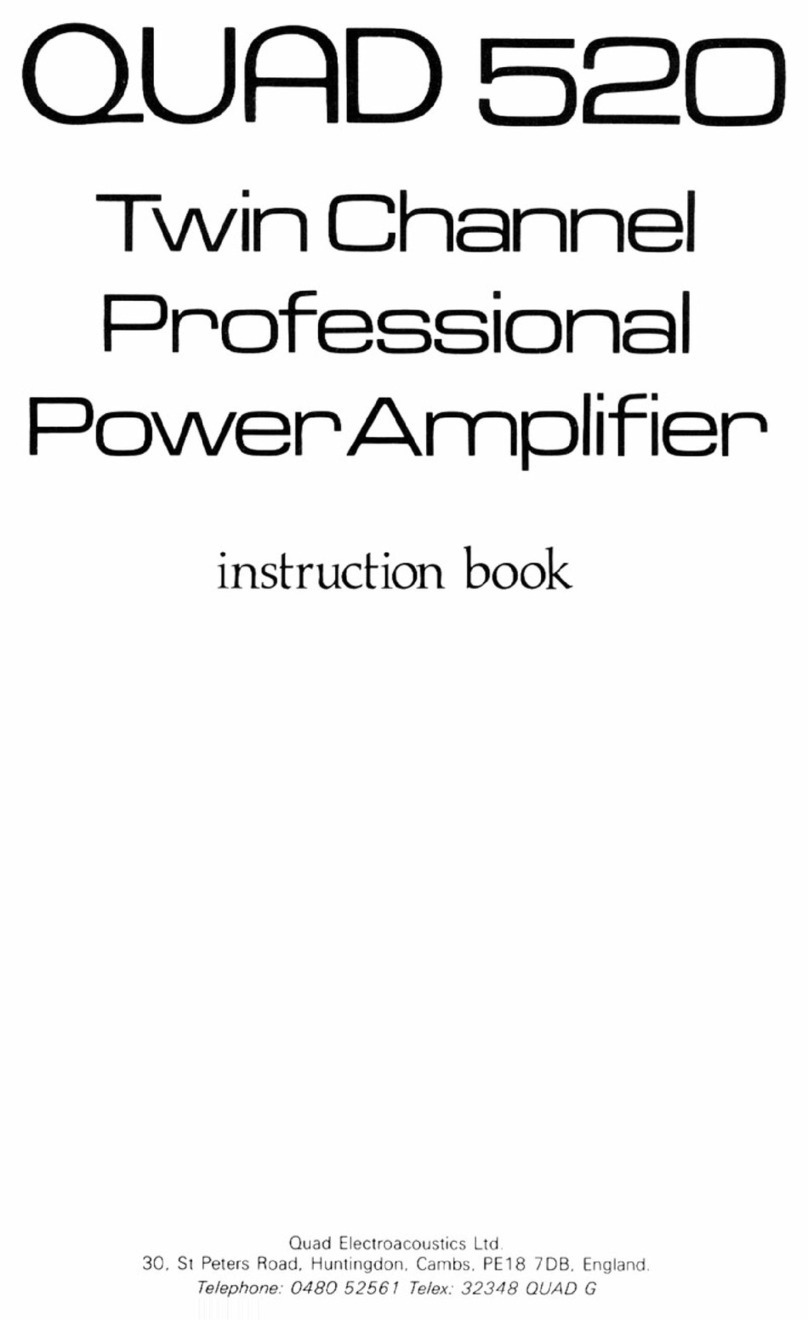PLUGIN BOAROS
2 x M12017 M120lS
Closeproximity of the control unit and tuners to
each
othershouldcause
no problemunlessthe control
unit is mountedimmediately
on top of the tuner, in
which casea spaceof about two inches
shouldbe left
between
them.
Hum canalsooccurif a low output magnetic
pickup
is too closeto a mainstransformer
or if its leads
run
closeto themainswiring.(See
Fig. 2).
All metal
parts
must
beearthedbut,because
multiple
earth connections
causehum, they shouldbe earthed,
directly or indirectly,by oneconnection
only, and the
wholeinstallationearthedat onepoint suchas the E
terminalon the rear of the control unit, OR the third
pin of thecontrolunit mainssocket,but not both.
(Note: All the Quad units are already bonded
together
by their own inter-connecting
cables).
Always
follow the
manufacturers'
instructions
supplied
with pickup, motor, taperecorder,
etc.,and refer any
query which may arise to your dealeror in caseof
difficultyto themanufacturer
concerned.
Page
Four
If the Quad 33 is not to be usedfree standingyou
will requirean aperturelA' x 3" as shownin Fig. 3
and a templateis providedin the rear of this booklet
to assistin marking thisout on thecabinet. Thecover
is then removedfrom the Quad 33, the unit p'assed
through the aperturefrom the front so that its lugs
locatein theaperture,andthecover
replaced
from the
rear,thusgrippingthecabinet
panelbetweentheQuad
33 front castingand its cover. The securing
screws
shouldbeinsertedfinger
tightand
then
given
one
further
half-turn to lock the unit firmly in position.
I' (2Omm)
tick
Lugs .OUAD 33cover
CovsrLocatins Slid6
FIG. 3
t)
